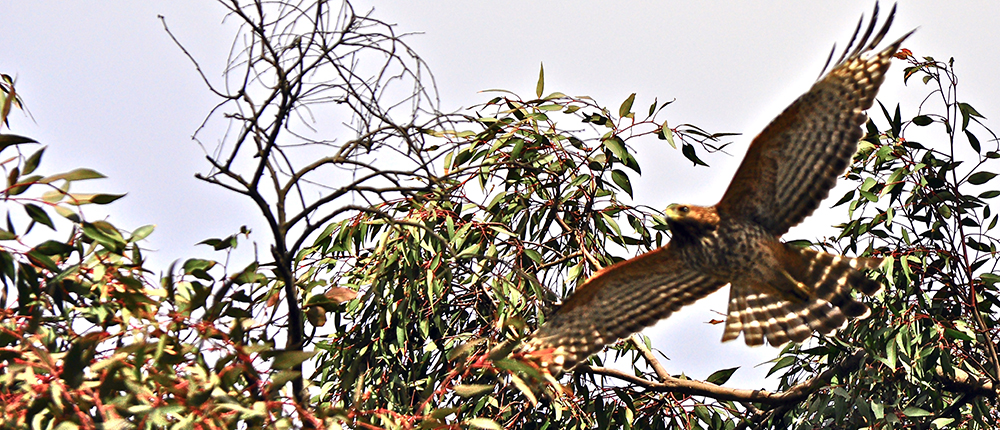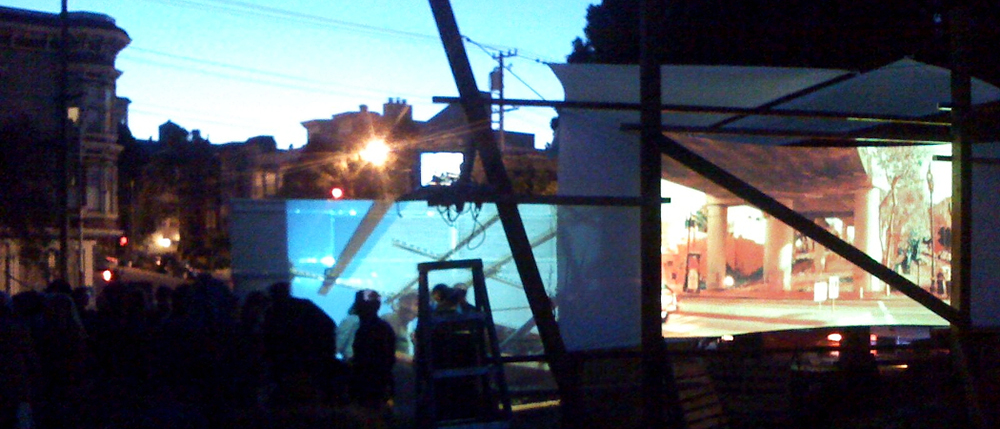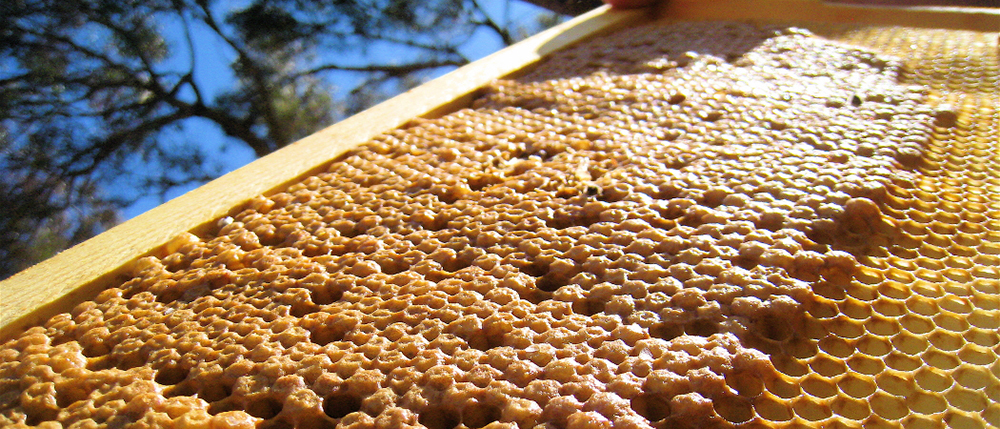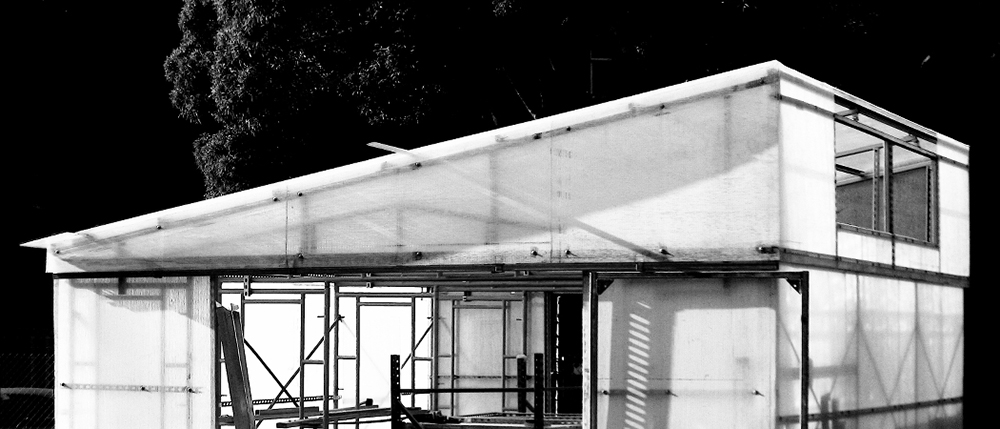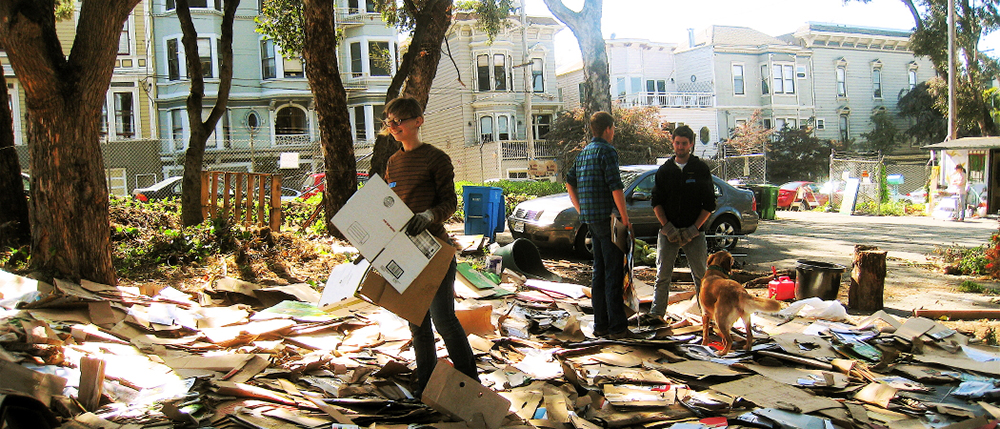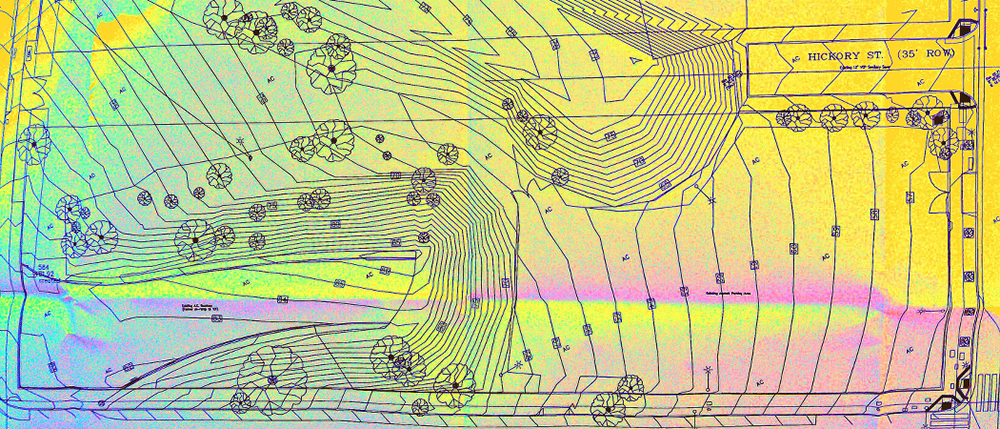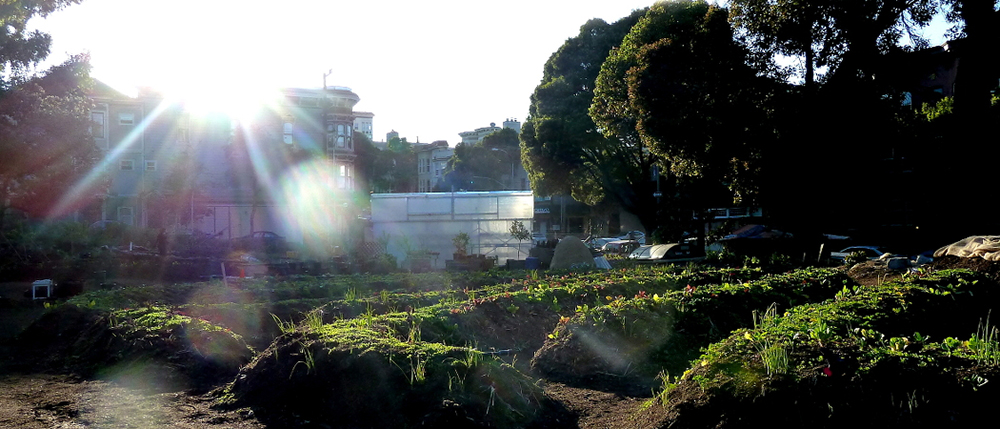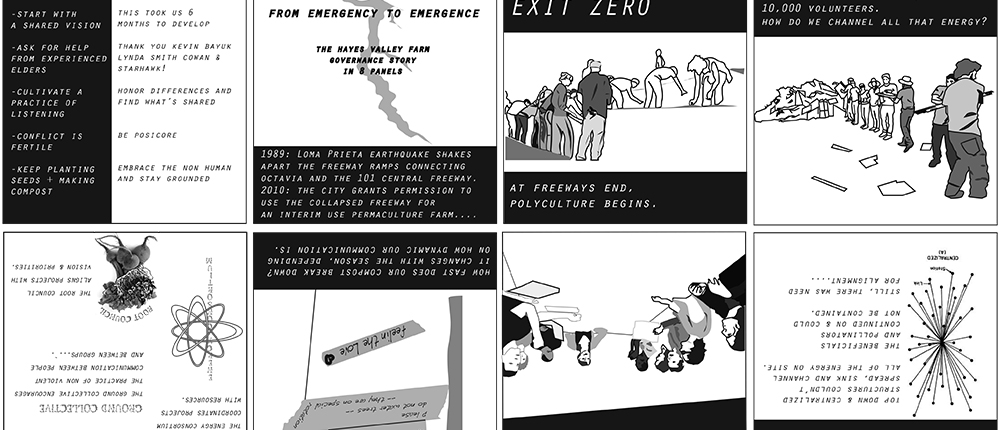Hayes Valley Farm was a collective experiment in activating abandoned city spaces for urban commons.
Images by Zoey Kroll and Margaretha Haughwout, as well as Steve Rhodes, Anthony Brown, Keith Joseph Hubbard, and Masha Slavnova.
…
Hayes Valley Farm was a 3 year collaboration between socially engaged artists, neighbors, city agencies, permaculture gardeners, community organizers, chefs, ecologists, researchers and city residents on the former on and off ramp in the Hayes Valley neighborhood of San Francisco. The Loma Prieta earthquake shook apart the on and off ramps in 1989 and created hill like edges on 2.5 acres of land — sculpturally and ecologically compelling. Early on, many of us recognized that the scope and level of participation was so great that it required resilient and distributed modes of engagement between humans and between humans and non humans. This recognition was followed by a sweeping shift in the practice of conflict and a deep inter-relational exploration of what it means to manage resources and practice an “urban commons.”
…
From an Artist Talk at the International Symposium of Electronic Art in 2017:
In 1940, Norbert Weiner developed the theory of feedback loops for automated anti-aircraft artillery,launched the study of cybernetics. The initial waves of cybernetics informed everything from ecological models of resiliency, to capitalist management structures. The principles that unperpin the field may have taken root in the entirety of our networked society, and then as the French anarchists tiqqun have argued, hidden itself and its history. To me, it represents both extremely utopian and extremely dystopian possibilities in its implications for both understanding ecosystems and for closed systems of control.
So a utopian cybernetic vision is for a regenerative eco-commons. These ideas of self sustaining commons are informed by the second wave of cybernetics championed by ecologists like Gregory Bateson, biologists like Francisco Varela, visionaries like Buckminster Fuller and the new communalists of the 1970s. References to cybernetics can be found all through the permaculture design manual, a whole systems design process based on an ethics of earth care and fair share, that uses the idea of feedback loops as a foundational aspect of the design process.
In 1989, the Loma Prieta earthquake shook apart the on and off ramps to a freeway in the Hayes Valley neighborhood of San Francisco and created hill like edges on 2.5 acres of land that were sculpturally and ecologically compelling. For 3 years from 2010 to 2013, this project was available to a coalition of permaculturists, socially engaged artists, neighbors, city agencies, community organizers, chefs, ecologists, researchers and city residents. We created soil from a process called sheet mulching and developed what we called a “freeway food forest,”. We considered one of our greatest achievements to be when a pair of hawks, a keystone species, moved to the site. And in one season 15 species of native butterflies were spotted. I called this project an urban commons and was deeply involved in day to day bio-intensive tending of this urban wilderness as well as designing its governance structure.
We can see a whole systems design process that uses feedback at work here in positive ways, particularly in terms of how we turned waste into nutrient – whether it be through sheet mulching, or rinsed rice water and spent milk from neighboring sushi and coffee bars to make a lactobaccilus culture for the soil for example.
During this project I reached out to a number of different theorists and artists to understand what we were doing. I began to see how a commoning project in the urban setting proposes a reversal of resource extraction from the country to the city. We were collecting cardboard and turning it into soil, growing perennial vegetables recharging the river that used to run through the site, all while growing food — but not just food for humans — we were also creating food and habitat for non humans too.
Hundreds of volunteers came in and out of the site every week; we had over 10,000 people visit the site and lend a hand by it’s closing. Early on, we recognized that the scope and level of participation was so great that it required a distributed management structure. I was fascinated to find how my background in networked, participatory systems and the digital commons advanced the development of a lateral governance model. The truly transformational aspect of this project was a deep inter-relational exploration of what it means to manage resources and practice an urban commons. Social engagement at Hayes Valley Farm demanded a direct engagement with conflict because of its flat organizational structure; I learned new, essential skills in needs based communication, skills that I feel are essential to a 21st-century socially engaged practice.
I’m interested in exploring how utopia functions in projects like these — in my mind to open up conversations and actions for exploring what is possible, new trajectories for exchanges of power. But I also returned to questions that emerge again and again in my work, regarding the tensions between holistic views of systems on the one hand and local relationships and face to face interactions on the other.








